- Home
- Tom Clancy
Airborne: A Guided Tour of an Airborne Task Force Page 2
Airborne: A Guided Tour of an Airborne Task Force Read online
Page 2
It’s called seizing the initiative. What uniformed officers call “the initiative” is nothing more than knowing that you have a choice of things to do, and your enemy knowing that as well. Better yet, it usually means that you can conduct your operations while your enemy must wait and react to whatever you choose to do. This is the inherent advantage of the offensive. The more time your enemy worries about what you can do rather than what he can do is money in the bank for the good guys. And that’s before you really do anything bad to him. The spirit of attack is the key to military operations today, and always will be. If you’re sitting still and waiting, your forces are probably sitting ducks, waiting to be served up by your enemy.
The 82nd Airborne Division is the Army’s counterpart to the United States Marine Corps, still a subsidiary organization of the United States Navy. The Marines are mainly light infantry troops who attack from the sea with the Navy in direct support. The Airborne strikes from the sky, carried there and supported by the United States Air Force. Both organizations are elite because they have to be. They do dangerous things. When the Marines hit a beach, whether by amphibious tractor, landing craft, or helicopter, they are coming in light in weapons. But while the Marines have a friendly sea at their back, and the “Big Blue Team” of the U.S. Navy in direct support, the Airborne goes in just about naked. How naked? Well, imagine yourself dangling from a parachute under fire. Rather like a duck in hunting season, except that you’re slowly coming straight down, and at least a duck can maneuver. Your unit lands scattered; not as a cohesive fighting formation. Your first job is to get organized—under fire from an organized foe—so that you can begin to do your job. Your weapons are only what you can carry, and tough, fit trooper that you are, you can’t carry all that much. It is a formidable physical challenge.
In September 1944, Allied paratroopers jumped into Eindhoven, Nimegen, and Arnhem (in Nazi-occupied Holland) in a bold attempt to bring an end to the Second World War by carving open a path through the German lines. This was designed to allow the rapid passage of the British XXX Corps into the German rear areas, cracking the enemy front wide open. It was a bold and ambitious plan, and it went so wrong. Remembered as a failure, Operation MARKET-GARDEN was, in my estimation, a gamble worth taking. Laid on much too quickly (just a week from first notice to the actual jumps) and executed without full and proper planning and training, it very nearly succeeded. Had that happened, millions of lives in German concentration camps might have been saved. As it was, one battalion of paratroopers from the British 1st Airborne Division held off what was effectively an SS armored brigade at Arnhem Bridge (the famous Bridge Too Far) for the best part of a week in their effort to save the mission. Outnumbered, heavily outgunned, and far from help, they came close to making it all work.
What this tells us is that it’s not just the weapons you carry that matter, but also the skill, training, and determination of the troopers who jump into battle. Elite is as elite does. Elite means that you train harder and do somewhat more dangerous things—which earns you the right to blouse your jump boots and strut a little more than the “track toads” of the armor community. It means that you know the additional dangers of coming into battle like a skeet tossed out of an electric trap at the gun club, and you’re willing to take them, because if you ever have to do it, there will be a good reason for it. The Airborne doesn’t have the weapons to do their job with a sabot round from four klicks (kilometers) away. They have to get in close. Their primary weapons are their M16 combat rifles and grenade launchers. For enemy armor they carry light anti-tank weapons. There are lots of people around the world with old Soviet-designed tanks to worry about, and Airborne forces have to train for that threat every day. As you might imagine, life in the 82nd can be hard!
However, that just makes them more enthusiastic for the life they have chosen for themselves. Visit them at Fort Bragg, and you see the pride, from the general who commands to the lieutenants who lead the troopers, to the sergeants who lead the squads and the new privates who are learning the business. You see a team tighter than most “old world” families. The senior officers, some of whom come in from other assignments in “heavy” units, almost always shed ten or fifteen years off their birth certificates and start acting like youngsters again. Everybody jumps in the division. In fact, everybody wants to jump and wants to be seen to jump. It’s the Airborne thing. You’re not one of the family if you don’t at least pretend to like it—and you can’t lead troopers like these if you’re not one of the family. These officers command from the front because that’s where the troopers are, and there is no rear for the Airborne. They walk with a confident strut, their red berets adjusted on their heads just so, because it’s an Airborne “thing.” They are a proud family.
The most recent nickname for the 82nd is “America’s Fire Brigade.” If there’s a big problem that the Marines can’t reach from the sea, or one that is developing just too rapidly for the ships to move in quickly enough, the Airborne will be there first. Their first job is likely to be seizure of an airfield so that heavy equipment can be flown in behind them. Or they might be dropped right onto an objective, to do what has to be done—hostage rescue, a direct attack on a vital enemy asset—with instant speed and lethal force, all of them hoping that they hit the ground alive so that they can organize, move out, and get it done fast, because speed is their best friend. The enemy will unquestionably be surprised by their arrival, and if you can organize and strike before he can organize to resist, you win. The idea is to end it as quickly as possible. It’s been said that no country has ever profited from a long war. That’s probably true. It is certainly true that no soldier ever profited from a long battle.
That’s why Paratroops train so hard. Hit hard. Hit fast. End it quickly. Clear the way for other troops and forces. Move out and prepare for the next one. Do these things and perhaps the next enemy will think twice. Maybe they will watch the sky and wonder how many of the red-beret troopers might be just a few hours away, and decide it isn’t worth the trouble. Just like nuclear weapons and precision-guided munitions, Airborne forces are a deterence force with power, mass, and ability to make an opponent think about whether his ambitions are really worth the risk and trouble. Think about that as you read on. I think that you will find, as I did, that the Airborne is as credible as they head into the 21st century, as they were in the Normandy Beachhead in 1944.
—Tom Clancy
Perigine Cliff, Maryland
February 1997
Airborne 101
And where is the prince who can so afford to cover his country with troops for its defense, as that ten thousand men descending from the clouds might not in many places do an infinite deal of mischief before a force could be brought together to repel them?
Benjamin Franklin
It is hard to believe that even a man with the wisdom and foresight of Benjamin Franklin could have envisioned the idea of paratroopers and airborne warfare in the 18th century. Back then, just the idea of floating under a kite or balloon would have seemed somewhat daft to most people. Yet something sparked the imagination of this most American of Colonial-era men. As with so many other things, he saw the future of warfare, although it developed beyond even his amazing vision.
Even today, the idea of jumping out of a perfectly good airplane strikes most people, myself included, as just short of insanity. Nevertheless, airborne forces have become and remain one of the most important branches of the world’s armed forces. The reason is simple. Airborne forces have the ultimate advantage of shock and surprise. They are able to strike from any direction, at any place and time. Nobody can afford to cover an entire country with troops to guard every vulnerable point. Therefore, the potential of being surprised by airborne forces is inherently something to worry about. For the actual victims of such an assault, that worry turns to actual dread. History teaches the value of surprise and shock in warfare, and the development of airborne forces in the 20th century is perhaps the ultimate
expression of those effects. One minute you are enjoying a quiet night at your post, the next you are fighting for your life against a foe who may be behind you, coming from a completely unexpected direction. Numerous German accounts from the defense of Normandy and Holland in 1944 tell the same story. The possibility of soldiers dropping out of a clear sky to attack you can provide a powerful reason to lose sleep and stay alert.
Airborne forces are hardly an American development. Actually, the United States was one of the last major powers to develop paratroop units. Prior to that, Germany, Italy, Russia, and Great Britain had all organized and committed airborne forces to battle. Nevertheless, the U.S. made up for its late start, and eventually conducted some of the largest and most successful airborne operations of all time. Today, despite their high costs, these same nations (and many others) continue to maintain some sort of airborne force. The reasons are obvious. The ability to reach into another nation’s territory and suddenly insert a military presence is just the kind of policy option that decision makers might want in a time of crisis. Think back to the 1976 Entebbe hostage rescue by the Israelis, the 1989 Panama invasion, or the initial Desert Shield deployments to Saudi Arabia in 1990.
Unfortunately, keeping such a capability alive and viable is expensive. Airborne troops need special training, equipment, and a force of transport aircraft to deliver them to their targets. Also, the personnel in airborne units are among the best qualified and motivated in the military, thus depriving other branches and services of skilled leaders and technicians that are badly needed. As early as World War II, senior Army leaders were concerned that the airborne divisions were skimming off the cream of their best infantry. A private in an airborne unit might well be qualified to be a sergeant and squad leader in a regular infantry formation. Still, those same Army leaders recognize a need for a hard-tipped force to smash an opening into enemy territory and lead the way in. That force is the airborne.
Modern airborne forces are part of the small group of elite units used by the United States and other nations in the highly specialized role of “forced entry.” This means forces assigned, specially trained, and equipped to lead assaults into an enemy-held area, then hold open the breach until reinforcements arrive to continue the attack. Today, these units usually fall into one of three different categories. They include:• Amphibious Forces: These include sea-based units such as the United States Marine Corps (USMC) Marine Expeditionary Units—Special Operations Capable (MEU [SOC]) and the Royal Marine Commando brigades. Riding aboard specially designed amphibious ships and equipped with landing craft and helicopters, they provide the ability to loiter for a long time and hold an enemy coastline at risk.
• Air Assault Units: Air assault units are helicopter-borne forces that enable a commander to reach several hundred miles/kilometers deep into enemy territory. First developed in the 1950s by the U.S. Marine Corps, these units are capable of lifting battalion or even brigade-sized infantry forces deep into enemy rear areas to establish strong points, blocking positions, or even logistical bases. Usually land-based in a nearby host nation, they also can be based aboard aircraft carriers, as was done during Operation Uphold Democracy in Haiti in 1994.
• Airborne Units: Airborne (parachute/air-delivered) forces are the final, and most responsive, forced-entry units available to national-level decision makers. They can be rapidly tasked and dispatched to virtually anywhere the antiair threat level is tolerant to transport aircraft. When combined with strategic airlift and in-flight refueling aircraft, they allow the early deployment of ground forces across almost any distance.
In the United States, we have formed our airborne forces into several different types of units. A small percentage are concentrated into the various Army special forces units, like the famous Ranger battalions. Most of our airborne capabilities are found in a single large formation, the 82nd Airborne Division at Fort Bragg, North Carolina. Built around three airborne brigades (each based around a reinforced parachute regiment), it is a force with almost twenty thousand jump-qualified personnel. Everyone from the two-star divisional commander to the public-affairs file clerk is certified to make parachute jumps into a potential combat zone. Once upon a time, there were several dozen such units in the world’s armies. Today, though, only the 82nd is really set up to make a division-sized jump into hostile territory.1
This is more than just an idle boast. The 82nd was about to make such a jump into Haiti when they were recalled in the fall of 1994. Three full airborne brigades were ready to drop into a country in just a few hours, and bring a dictator to heel, had that been necessary.
Today, in maintaining the capacity to rapidly deploy overseas, the 82nd actually combines the capabilities of several major services and commands, including the U.S. Transportation Command (TRANSCOM) and their organic Air Mobility Command (AMC). The 82nd also derives a great deal of its training and transportation from the Air Force’s Air Mobility Command (AMC). Like so many of the capabilities of today’s military, there is almost always more to a unit than you see on CNN. So read on and I’ll try and show you the varieties of units and qualities that make up the 82nd’s legendary history and deadly combat potential.
Airborne Technology
Mother Nature probably deserves the credit for inventing airborne delivery. Puff on the ripe flower head of a dandelion and a hundred elegant parachutes dance away on the wind, each carrying a freight of seed. Evolution has taught countless species of plants and animals the lessons of lift and drag, embodied in an endless variety of superbly designed aerodynamic structures. From bald eagles to butterflies, nature was the original aerodynamic engineer, with endless generations to perfect what man today does with computers, wind tunnels, and composite structures.
A “chalk” of paratroops drops from the rear of a C-17A Globemaster III heavy transport.
OFFICIAL U.S. AIR FORCE PHOTO VIA McDONNELL DOUGLAS AERONAUTICAL SYSTEMS
It’s a long way from a dandelion pod to the modern transport aircraft and parachute systems that make the idea of FEDEXing an airborne unit overnight to the other side of the world possible. Still, the same physical principles apply to both problems.
Man has dreamt of flight from the very beginning of recorded time. Still, it wasn’t until the coming of the 20th century that the basic technologies allowed these dreams to become reality. The first was the transport aircraft. As opposed to fighters and bombers, whose armament constitute their payloads, the transport aircraft is the flying equivalent of a tractor-trailer truck. It is this aircraft which makes airborne operation possible, because without aerial transport, paratroopers are just extremely well-trained infantry.
The other technological development that made the airborne a viable force was the parachute, which required decades of evolution to reach the point where it could reliably deliver a man or vehicle safely to the ground. In fact, not until the 1950s was it really perfected. It is worth a look at these systems to better understand their significance in the development of airborne warfare.
Transport Aircraft
If you have any knowledge of aviation history, you know that General Billy Mitchell was the first American with a real vision of the military uses of airpower. Even before the opening of World War I, he was pondering just what airplanes might do for the Army. The limited payload, range, and speed of early aircraft probably made it unlikely that, at first, he really thought much about dropping armed troops on an enemy. What we know of his nascent visions shows airpower as a tool of coercion, reconnaissance, and overmatching destruction, not necessarily as a delivery service for ground forces and their equipment. Even his experiences in World War I seem to have limited his thinking until 1918, when he began to plan a primitive airborne operation. By the standards of the time it was a stunning scheme: an airborne assault by parachute infantry behind the German lines. He proposed dropping a force of soldiers from the U.S. 1st Division onto Metz and several other fortress towns to help breakthroughs by Allied forces in the spring of 1919.
While the end of World War I occurred before Mitchell could carry out his plan, the seed of airborne warfare had been planted in the American military. As a historical footnote, the young officer assigned to study and plan Mitchell’s assault concept was Louis Brereton, who later was to command the 9th Air Force and the 1st Airborne Army during World War II.
It is a matter of historic record that it only took a few years of development to adapt the airplane from a fairground novelty into a combat weapon. Despite the forward thinking of men like Mitchell, the only major military mission that the airplane did not conduct during the Great War is the one that is of interest to us here: personnel, equipment, and supply transport. In their zeal to become a combat arm, the early air force personnel concentrated their efforts upon procuring better models of pursuit (i.e., fighter), bomber, and reconnaissance aircraft.
Even today, most airpower advocates still prefer to think in terms of bombers and fighters striking offensively at an enemy, not the seemingly mundane supporting roles of transport and reconnaissance. Yet it is these last two roles that most ground unit commanders find the most worthwhile. This has been the essential debate for over seven decades. Does airpower support ground operations, or supersede them? Wherever your opinion, it is important to remember that airpower is more than just a killing force in warfare. Everyone, even those leaders wearing USAF blue, needs to remember that airpower’s essential value comes from the exploitation of aviation’s full range of possibilities. Even those missions important to mere mortals who walk and fight down in the mud.
After the First World War it took the vision of men who wanted to make peacetime aviation into a profitable business to cause the birth of real transport aircraft. The first of these efforts took the form of high-speed mail planes, which brought the dream of quick coast-to-coast mail service to reality. As soon as that concept was proven, the idea of doing the same thing with people came into being. You have to remember that coast-to-coast rail service took a minimum of four to six days in the 1920s. Given a propeller-driven aircraft of sufficient range, reliability, and safety, one could potentially reduce that to a day or two. With such aircraft, profitable airlines were possible. One of the first of these aircraft was the famous Ford Tri-Motor, which arrived in 1926. Called the “Tin Goose,” it made regional travel (say, between New York and Boston) in a day not only possible, but routine. European designs like the German Junkers Model 52 (Ju-52) brought similar benefits to airlines overseas.

 Changing of the Guard
Changing of the Guard Clear and Present Danger
Clear and Present Danger Hounds of Rome
Hounds of Rome Breaking Point
Breaking Point Tom Clancy's Jack Ryan Books 7-12
Tom Clancy's Jack Ryan Books 7-12 Full Force and Effect
Full Force and Effect The Archimedes Effect
The Archimedes Effect Combat Ops
Combat Ops Into the Storm: On the Ground in Iraq
Into the Storm: On the Ground in Iraq Under Fire
Under Fire Point of Impact
Point of Impact Red Rabbit
Red Rabbit Rainbow Six
Rainbow Six The Hunt for Red October
The Hunt for Red October The Teeth of the Tiger
The Teeth of the Tiger Conviction (2009)
Conviction (2009) Battle Ready
Battle Ready Patriot Games
Patriot Games The Sum of All Fears
The Sum of All Fears Fallout (2007)
Fallout (2007) Red Storm Rising
Red Storm Rising The Cardinal of the Kremlin
The Cardinal of the Kremlin Executive Orders
Executive Orders Lincoln, the unknown
Lincoln, the unknown Threat Vector
Threat Vector The Hunted
The Hunted Shadow Warriors: Inside the Special Forces
Shadow Warriors: Inside the Special Forces End Game
End Game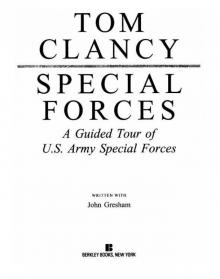 Special Forces: A Guided Tour of U.S. Army Special Forces
Special Forces: A Guided Tour of U.S. Army Special Forces Locked On
Locked On Line of Sight
Line of Sight Tom Clancy Enemy Contact - Mike Maden
Tom Clancy Enemy Contact - Mike Maden Fighter Wing: A Guided Tour of an Air Force Combat Wing
Fighter Wing: A Guided Tour of an Air Force Combat Wing Springboard
Springboard Line of Sight - Mike Maden
Line of Sight - Mike Maden EndWar
EndWar Dead or Alive
Dead or Alive Tom Clancy Support and Defend
Tom Clancy Support and Defend Checkmate
Checkmate Command Authority
Command Authority Carrier: A Guided Tour of an Aircraft Carrier
Carrier: A Guided Tour of an Aircraft Carrier Blacklist Aftermath
Blacklist Aftermath Marine: A Guided Tour of a Marine Expeditionary Unit
Marine: A Guided Tour of a Marine Expeditionary Unit Commander-In-Chief
Commander-In-Chief Armored Cav: A Guided Tour of an Armored Cavalry Regiment
Armored Cav: A Guided Tour of an Armored Cavalry Regiment Tom Clancy's Jack Ryan Books 1-6
Tom Clancy's Jack Ryan Books 1-6 The Ultimate Escape
The Ultimate Escape Airborne: A Guided Tour of an Airborne Task Force
Airborne: A Guided Tour of an Airborne Task Force Debt of Honor
Debt of Honor Cyberspy
Cyberspy Point of Contact
Point of Contact Operation Barracuda (2005)
Operation Barracuda (2005) Choke Point
Choke Point Power and Empire
Power and Empire Every Man a Tiger: The Gulf War Air Campaign
Every Man a Tiger: The Gulf War Air Campaign Endgame (1998)
Endgame (1998) EndWar: The Missing
EndWar: The Missing Splinter Cell (2004)
Splinter Cell (2004) The Great Race
The Great Race True Faith and Allegiance
True Faith and Allegiance Deathworld
Deathworld Ghost Recon (2008)
Ghost Recon (2008) Duel Identity
Duel Identity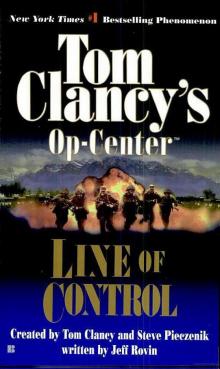 Line of Control o-8
Line of Control o-8 The Hunt for Red October jr-3
The Hunt for Red October jr-3 Hidden Agendas nf-2
Hidden Agendas nf-2 Acts of War oc-4
Acts of War oc-4 Ruthless.Com pp-2
Ruthless.Com pp-2 Night Moves
Night Moves The Hounds of Rome - Mystery of a Fugitive Priest
The Hounds of Rome - Mystery of a Fugitive Priest Into the Storm: On the Ground in Iraq sic-1
Into the Storm: On the Ground in Iraq sic-1 Threat Vector jrj-4
Threat Vector jrj-4 Combat Ops gr-2
Combat Ops gr-2 Virtual Vandals nfe-1
Virtual Vandals nfe-1 Runaways nfe-16
Runaways nfe-16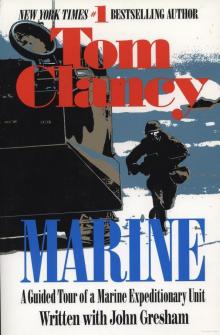 Marine: A Guided Tour of a Marine Expeditionary Unit tcml-4
Marine: A Guided Tour of a Marine Expeditionary Unit tcml-4 Shadow Warriors: Inside the Special Forces sic-3
Shadow Warriors: Inside the Special Forces sic-3 Jack Ryan Books 1-6
Jack Ryan Books 1-6 Cold Case nfe-15
Cold Case nfe-15 Changing of the Guard nf-8
Changing of the Guard nf-8 Splinter Cell sc-1
Splinter Cell sc-1 Battle Ready sic-4
Battle Ready sic-4 The Bear and the Dragon jrao-11
The Bear and the Dragon jrao-11 Fighter Wing: A Guided Tour of an Air Force Combat Wing tcml-3
Fighter Wing: A Guided Tour of an Air Force Combat Wing tcml-3 Patriot Games jr-1
Patriot Games jr-1 Jack Ryan Books 7-12
Jack Ryan Books 7-12 Mission of Honor o-9
Mission of Honor o-9 Private Lives nfe-9
Private Lives nfe-9 Operation Barracuda sc-2
Operation Barracuda sc-2 Cold War pp-5
Cold War pp-5 Point of Impact nf-5
Point of Impact nf-5 Red Rabbit jr-9
Red Rabbit jr-9 The Deadliest Game nfe-2
The Deadliest Game nfe-2 Springboard nf-9
Springboard nf-9 Safe House nfe-10
Safe House nfe-10 EndWar e-1
EndWar e-1 Duel Identity nfe-12
Duel Identity nfe-12 Deathworld nfe-13
Deathworld nfe-13 Politika pp-1
Politika pp-1 Rainbow Six jr-9
Rainbow Six jr-9 Tom Clancy's Power Plays 1 - 4
Tom Clancy's Power Plays 1 - 4 Endgame sc-6
Endgame sc-6 Executive Orders jr-7
Executive Orders jr-7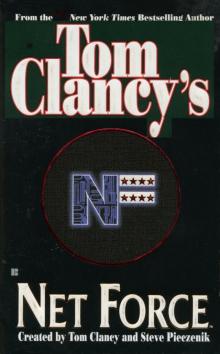 Net Force nf-1
Net Force nf-1 Call to Treason o-11
Call to Treason o-11 Locked On jrj-3
Locked On jrj-3 Against All Enemies
Against All Enemies The Sum of All Fears jr-7
The Sum of All Fears jr-7 Sea of Fire o-10
Sea of Fire o-10 Fallout sc-4
Fallout sc-4 Balance of Power o-5
Balance of Power o-5 Shadow Watch pp-3
Shadow Watch pp-3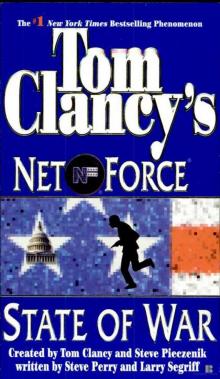 State of War nf-7
State of War nf-7 Wild Card pp-8
Wild Card pp-8 Games of State o-3
Games of State o-3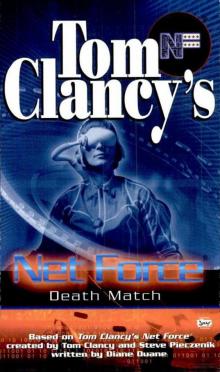 Death Match nfe-18
Death Match nfe-18 Against All Enemies mm-1
Against All Enemies mm-1 Every Man a Tiger: The Gulf War Air Campaign sic-2
Every Man a Tiger: The Gulf War Air Campaign sic-2 Cybernation nf-6
Cybernation nf-6 Support and Defend
Support and Defend Night Moves nf-3
Night Moves nf-3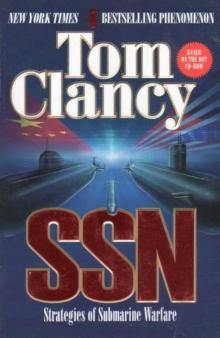 SSN
SSN Cutting Edge pp-6
Cutting Edge pp-6 The Cardinal of the Kremlin jrao-5
The Cardinal of the Kremlin jrao-5 War of Eagles o-12
War of Eagles o-12 Op-Center o-1
Op-Center o-1 Mirror Image o-2
Mirror Image o-2 The Archimedes Effect nf-10
The Archimedes Effect nf-10 Teeth of the Tiger jrj-1
Teeth of the Tiger jrj-1 Bio-Strike pp-4
Bio-Strike pp-4 State of Siege o-6
State of Siege o-6 Debt of Honor jr-6
Debt of Honor jr-6 Zero Hour pp-7
Zero Hour pp-7 Ghost Recon gr-1
Ghost Recon gr-1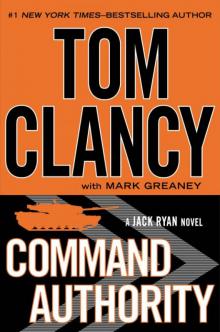 Command Authority jr-10
Command Authority jr-10 Tom Clancy's Power Plays 5 - 8
Tom Clancy's Power Plays 5 - 8 Checkmate sc-3
Checkmate sc-3 Breaking Point nf-4
Breaking Point nf-4 Gameprey nfe-11
Gameprey nfe-11 The Hunted e-2
The Hunted e-2 Hidden Agendas
Hidden Agendas Divide and Conquer o-7
Divide and Conquer o-7